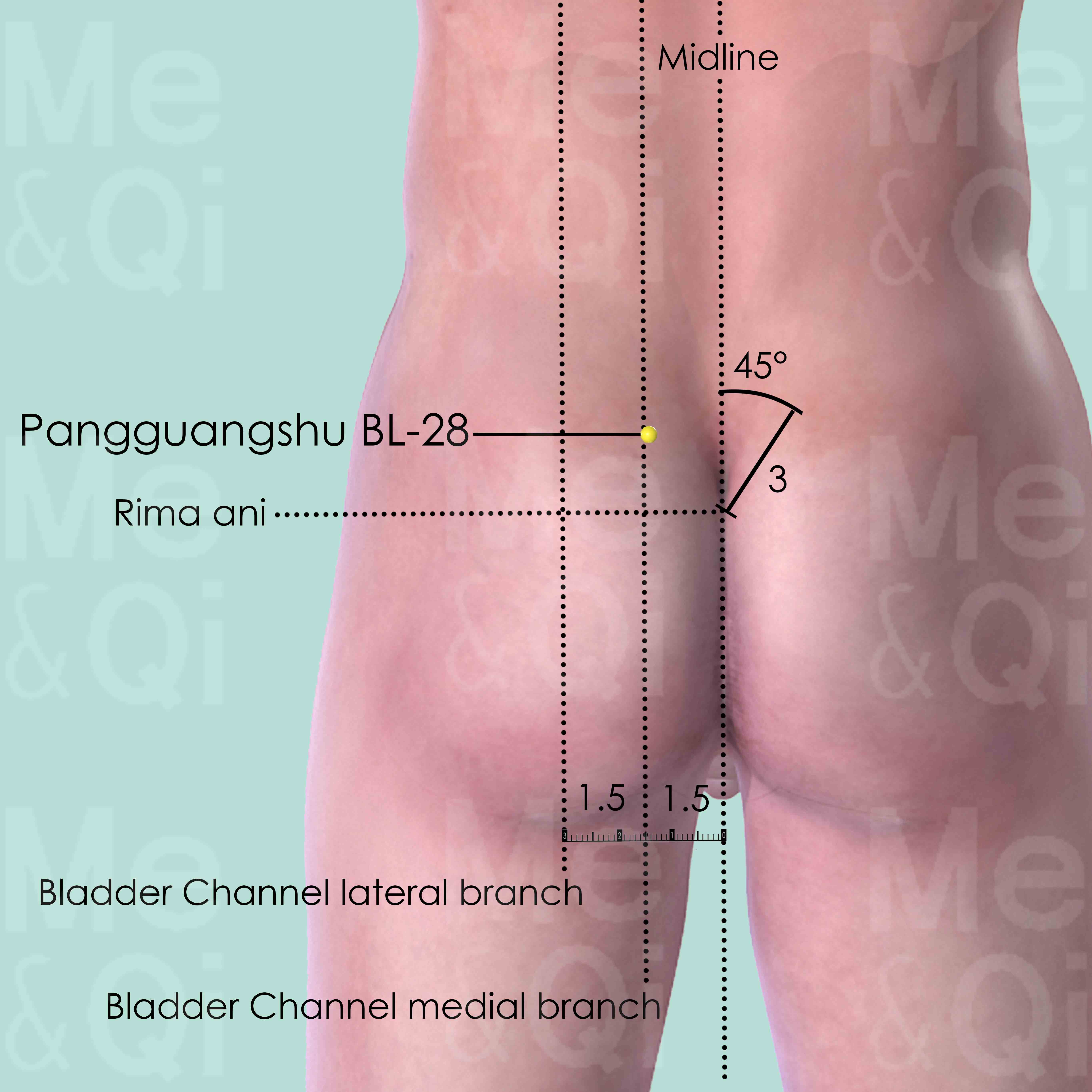Kidney Stonesaccording to TCM
Symptom families: Kidney and Nephritic Disorders, Urinary Stone Disorders
What are Kidney Stones?
Kidney stones, also known as renal calculi, nephrolithiasis, or renal stones, are hard deposits made of minerals and salts that form inside the kidneys. These stones can affect any part of the urinary tract, from the kidneys to the bladder.
Often, stones form when the urine becomes concentrated, allowing minerals to crystallize and stick together. Passing kidney stones can be quite painful, but they usually don't cause permanent damage if recognized and treated promptly. Symptoms may include severe pain, blood in the urine, and nausea or vomiting.
How does TCM view Kidney Stones?
Traditional Chinese Medicine (TCM) perceives kidney stones as a condition arising from imbalances and disharmonies within the body's natural systems. Contrasting Western medicine's focus on physical mineral deposits, TCM considers kidney stones a result of deeper issues like Stagnation, accumulation of Phlegm, and disharmony in the body's vital energies.
TCM emphasizes the importance of identifying the specific pattern of disharmony to effectively treat kidney stones, using a holistic approach that includes herbal medicine, acupuncture, and dietary therapy.
Root Causes of Kidney Stones in TCM
In TCM, kidney stones are often associated with the accumulation of Phlegm in the Kidneys or Gallbladder. This condition is seen as a result of imbalances in the Body Fluids, leading to the formation of stones. The underlying cause is often linked to dietary habits and the body's metabolic processes.
Another TCM perspective considers the disharmony between the Liver and Spleen systems, which can contribute to the formation of stones through the disruption of the body's energy flow. Addressing these root causes through diet, lifestyle changes, and herbal medicine is key to TCM's approach to treating kidney stones.
Explore below more details about what might cause Kidney stones according to TCM.
- By Syndrome
- By Organ
- Phlegm
- Gallbladder
- Kidney
Phlegm
In TCM "Phlegm" as a pattern of disharmony is a complex concept that extends beyond the physical manifestation of mucus. It represents a pathological factor that can disrupt the flow of Qi (vital energy) and blood, leading to various health issues. Phlegm in TCM is seen as a sticky, turbid substance arising from the body's inability to metabolize fluids properly, often due to a dysfunction of the spleen. It's not only associated with respiratory problems like cough and congestion but also with systemic issues. Symptoms can include a feeling of heaviness, mental cloudiness, dizziness, and in some cases, the formation of lumps or masses. Phlegm can even be "invisible," contributing to emotional disturbances like depression or stress. ... see more
Phlegm Patterns That Can Lead to Kidney Stones
| Pattern Name | Relevant Symptoms | Relevant Formulas |
|---|---|---|
| Phlegm in Kidneys or Gallbladder | Kidney stones, Frequent and urgent urination, Urinary dysfunction, Hematuria | Si Ni San | Pai Shi Tang |
Gallbladder
In TCM the Gallbladder has a unique role in storing and excreting bile, but more importantly, it's seen as crucial for decision-making and courage. It's closely connected to the Liver, assisting in the smooth flow of Qi (vital energy) and supporting the Liver's role in maintaining emotional balance. When the Gallbladder malfunctions or is imbalanced in TCM, it can lead to physical symptoms like gallstones, jaundice, or a bitter taste in the mouth. There might also be digestive disturbances, particularly related to fat metabolism. On an emotional level, a Gallbladder disorder can manifest as indecisiveness, timidity, or a tendency to easily succumb to stress. These symptoms highlight the TCM view of the Gallbladder as integral to both physical processes and emotional resilience.... see more
Gallbladder Patterns That Can Lead to Kidney Stones
| Pattern Name | Relevant Symptoms | Relevant Formulas |
|---|---|---|
| Phlegm in Kidneys or Gallbladder | Kidney stones, Frequent and urgent urination, Urinary dysfunction, Hematuria | Si Ni San | Pai Shi Tang |
Kidney
In TCM the Kidneys are regarded as the body's most fundamental reservoir of Essence, known as Jing, which influences growth, reproduction, and aging. They are not just organs for filtering blood, but a holistic system governing vital life forces. When the Kidneys malfunction in TCM, it can manifest as a variety of health issues, such as chronic fatigue, reproductive problems, imbalances in fluid metabolism leading to edema or dryness, lower back pain, and a sense of fear or insecurity.... see more
Kidney Patterns That Can Lead to Kidney Stones
| Pattern Name | Relevant Symptoms | Relevant Formulas |
|---|---|---|
| Phlegm in Kidneys or Gallbladder | Kidney stones, Frequent and urgent urination, Urinary dysfunction, Hematuria | Si Ni San | Pai Shi Tang |
TCM Herbal Formulas for Kidney Stones
TCM recommends specific formulas and herbs to treat kidney stones, focusing on resolving the underlying imbalances. Si Ni San, a formula containing Bupleurum Roots (Chai Hu), is used to harmonize the liver-spleen relationship and alleviate the conditions leading to stone formation.
This formula falls under the category of "Formulas that harmonize Liver-Spleen" and works by releasing exterior conditions and improving energy flow. By targeting the root causes of Phlegm accumulation and disharmony, these herbal treatments aim to dissolve the stones and prevent their recurrence, reflecting TCM's holistic approach to healing.
Explore below some TCM herbal formulas used to address kidney stones, organized by cause and by formula type.
- By Cause
- By Formula Type
- Phlegm
- Formulas that nourish yin and tonify
- Formulas that warm and purge
- Formulas that harmonize liver-Spleen
- Formulas that clear heat and expel dampness
- Formulas that warm yang and tonify
Top Formula for Phlegm:
Si Ni San
Suitable for Phlegm patterns that may cause kidney stones, such as Phlegm in Kidneys or Gallbladder
Learn moreAll Formulas Recommended for Kidney Stones Caused by Phlegm
| Formula | Patterns Suitable For |
|---|---|
| Si Ni San | Phlegm in Kidneys or Gallbladder |
| Pai Shi Tang | Phlegm in Kidneys or Gallbladder |
Formulas that harmonize Liver-Spleen
These formulas are suitable for some kidney stones-causing patterns like Phlegm in Kidneys or Gallbladder.
One such formula is Si Ni San, with bupleurum root as a key herb.
Formulas that clear Heat and expel dampness
These formulas are suitable for some kidney stones-causing patterns like Phlegm in Kidneys or Gallbladder.
One such formula is Pai Shi Tang, with bupleurum root as a key herb.
Formulas that nourish Yin and tonify
Kidney stones can be treated by these formulas when it arises from a deficiency in Yin energy, needing nourishment and strengthening of the body's vital essence.
One such formula is Ba Wei Di Huang Wan, with prepared rehmannia as a key herb.
Formulas that warm and purge
Kidney stones can be treated by these formulas if it stems from cold accumulation coupled with excess conditions, necessitating warming and purging actions.
One such formula is Da Huang Fu Zi Tang, with prepared aconite as a key herb.
Formulas that warm Yang and tonify
Kidney stones can be treated by these formulas if it stems from a depletion of Yang energy, requiring actions that warm and strengthen Yang.
One such formula is Shen Qi Wan, with prepared aconite as a key herb.
Acupoints for Kidney Stones
In TCM, acupuncture is a crucial component of treating kidney stones. A key acupoint in this context is Pangguangshu BL-28, located in the Bladder Channel. This point, found at the level of the 2nd posterior sacral foramen and 1.5 cun lateral to the posterior midline, is effective in regulating the Bladder, resolving Damp-Heat, strengthening the lower back, and removing Stagnation.
By stimulating this acupoint, TCM practitioners aim to enhance urinary function, alleviate pain, and facilitate the passage or dissolution of kidney stones, integrating acupuncture into a comprehensive treatment plan.
See more details below about Pangguangshu BL-28, an acupoint used to address kidney stones.
- By Meridian
- Bladder Channel

Pangguangshu BL-28
At the level of the 2nd posterior sacral foramen, 1.5 cun lateral to the posterior midline, in the depression between the medial border of the posterior superior iliac spine (PSIS) and the sacrum.
